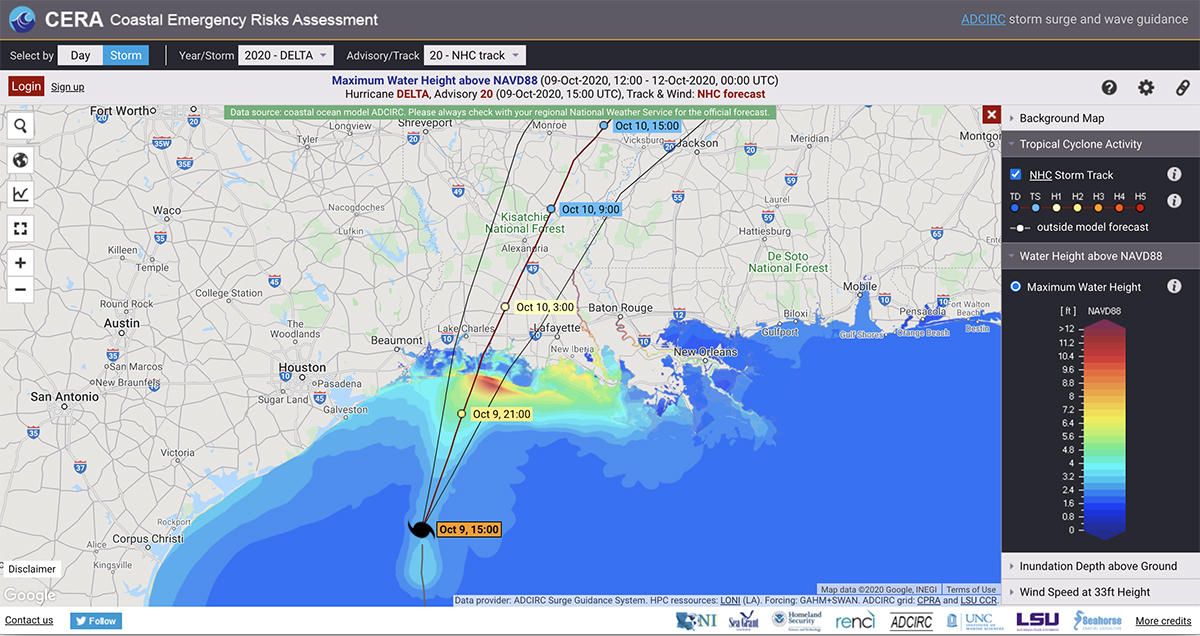
The morning of October 9, 2020, the National Hurricane Center issued the following warning:
...RAINBANDS OF DELTA SPREADING INTO SOUTHWESTERN LOUISIANA AND SOUTHEASTERN TEXAS... ...EXPECTED TO BRING HURRICANE CONDITIONS AND A LIFE-THREATENING STORM SURGE TO PORTIONS OF THE NORTHERN GULF COAST LATER TODAY...
Days earlier, when Hurricane Delta was a small, disorganized storm in Caribbean Sea, the team of researchers who provide storm surge model guidance for coastal states were already cranking out simulations using the Frontera supercomputer at The University of Texas at Austin's Texas Advanced Computing Center (TACC) — one of the fastest in the world.
Storm surge, the rise in sea-level caused by wind and waves, is the deadliest aspect of a hurricane. It can cause water levels to rise quickly — sometimes several feet in just minutes. Storm surge was the main cause of death during Hurricane Katrina and was a major factor in the devastating flooding of Hurricane Harvey.
Researchers have developed a system of computer programs called ADCIRC that use mathematical models of physical forces to simulate and predict the storm surge an incoming storm will produce based on the official hurricane forecast tracks. It has successfully forecast storm surge for the past 25 years.
"We've added more and more physics, better numerical algorithms, better software, better use of high-performance computing resources, and it just continues to improve to the present day," said Clint Dawson, professor of aerospace engineering and engineering mechanics at The University of Texas at Austin and one of ADCIRC's lead developers.







